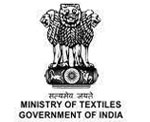Saree
Saree, probably the simplest and yet most stylish and versatile form of women's wear which originated in India, has been popularized by the Indian women around the world to such an extent that it needs no further introduction today. Draping a saree is an art into itself, which can transform the personality of the wearer from traditional to contemporary. A saree can be a perfect day wear, business wear, casual wear, evening wear, cocktail wear or bridal wear depending on the choice of fabric, colours, design, embellishments and the style of draping..
Over the centuries, the Indian saree has kept evolving in terms of fabrics, colours, designs, draping style. But its fundamental concept of wrapping a length of five and a half meters of fabric around the body continues to be the same.
Indian saree epitomizes an age-old tradition of women's wear that has not only withstood the onslaught of many different cultures on the country over hundreds of years, but has won admiration to such an extent, that designers across the globe have designed collections inspired by this inimitable piece of exquisitely designed fabric which is 44 inches width and five and half meters in length. Today, saree has emerged as a visible symbol of style, resilience, versatility and timelessness of the Indian way of life. Several international designers have attempted a stitched or ready to wear saree, but it has been difficult to match the grace of the original version which is wrapped around the body.
So interwoven is the saree with the life and traditions of the Indian people that each region of the country has developed a style of its own. For example, the exquisite Patola (Ikat) and Bandhni (tie & dye) are the traditions from Gujarat & Rajasthan.
Weaving silks in vibrant colours, weighing anywhere from a few hundred grams to as much as 10 kilograms is a specialty of Indian south states of Tamil Nadu (Kanchipuram), Karnataka (Mysore) and Andhra Pradesh (Vijayawada).
South Indian silk sarees are famous for their unique textures and designs. Kornadsarees originated from Kornad or Thanjavur in Tamil Nadu. The best ones are produced in Kanchipuram in Tamil Nadu, Dharmavaram in Andhra Pradesh, and Kollegal in Mysore. Woven with the finest of silk, the designs in these sarees are traditional with special stress on borders and pallus.
Kanchipuram sarees have contrasting border and pallu woven with a variety of zari motifs such as 'rudraksham', 'mallimogu', 'gopuram' etc. Pochampally silk sarees with geometrical designs are woven in Andhra Pradesh.
Shahpur in Karnataka specialize in sarees in soft pastels. Cotton sarees in dark earthy colours are made in Hubli-Dharwar of the same state. A special saree from Ilkal in Bijapur district is known as Ilkal, which are made from finer count yarn in rich colours like the special pomegranate red, brilliant peacock blue, parrot green. Within Andhra Pradesh, Gadwal and Kothakota weave fine cotton sarees with rich gold borders and heavy panel-like pallus. Siddhipet and Armoor weave cotton sarees with richly woven pallus and gold borders in opulent designs.
In Tamil Nadu and Andhra Pradesh, where inexpensive cotton sarees are produced, even the simplest sarees have broad borders on either side. Kerala makes a distinctive saree known as Karalkuda. Chanderi and Maheshwar from Madhya Pradesh, Venkatagiri from Andhra Pradesh in cotton are characterized by their simplicity and graceful charm.
Assam in North East produces inimitable naturally shimmering gold Muga silk sarees. Silk sarees with Kantha stitch embroidery is a specialty of the Bengal. Paithani silk saree from Maharashtra and the brocades from Banaras are equally representative of the unique skills of the weavers of those regions. Pune manufactures distinctive sarees with a gold thread speckled panel for the pallu and a narrow gold patterned border. Similarly cotton sarees from Coimbatore, Kota, and Odisha have their unique character.
Saree is another name of glamour and ethnicity. Handwoven sarees are made in voile, doria, dobby, jacquard; yarn dyed woven designs, prints, brocade, crepe, chiffon, georgette, satin and a variety of other fabrics with beautiful weaves highlighting body, borders and pallu (end piece) as the case may be.
Today, in addition to the traditional designs, sarees are also produced in contemporary designs to suit the young, urban and international taste. Though significant impact has been made by machine-made sarees, the discerning consumers still clearly prefer the handwoven ones, especially for festivals, weddings, special occasions and celebrations.
Indian sarees are highly popular the world over and are regularly exported to countries like USA, Canada, UK, France, Germany, Singapore, Hong Kong, Middle-East Asia, Africa and several other countries.



